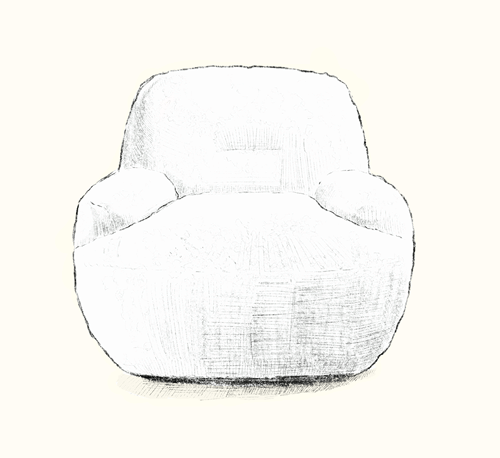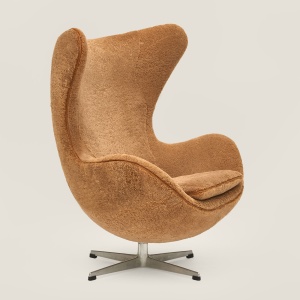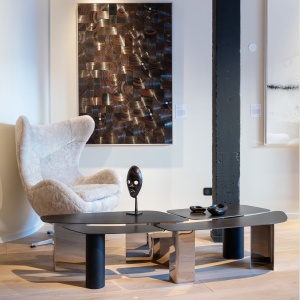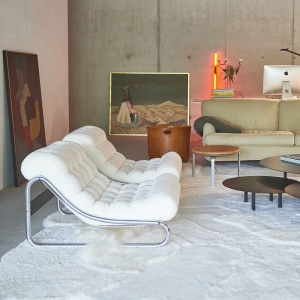scandinavian design history
Scandinavian design, synonymous today with understated elegance and functionality, has roots that stretch back far beyond the mid-20th century. It was within the heart of the Nordic forests, over centuries, that a unique artisanal skill was forged, shaping everyday objects that were as beautiful as they were practical.
The Beginnings of an Iconic Style
Scandinavian design, now celebrated for its clean lines, natural materials, and functional aesthetic, finds its origins in a fascinating era, long before the tumult of the Second World War. This period, marked by the awakening of the first inspirations, laid the foundations for a style that has since captivated the world. Scandinavian design is distinguished by iconic figures: Kaare Klint, who transformed furniture comfort; Alvar Aalto, with scandinavian furniture whit organic forms blending functionality and beauty; and Bruno Mathsson, who innovated with wood bending techniques, combining elegance and the avant-garde.
18th-Century Furniture: A Foundation
While 18th-century furniture differs in appearance from modern Scandinavian design, it laid the groundwork for what was to come. Craftspeople of the time developed woodworking techniques that were passed down through generations, creating sturdy and durable pieces. Scandinavian countries have a long tradition of woodworking. In the 18th century, furniture was often solid, carved, and ornate, reflecting the European styles of the time. Forms were inspired by nature, with references to the curves of trees and the clean lines of landscapes.
our finest vintage pieces
The Emergence of a New Style
At the end of the 19th century and the beginning of the 20th, a wind of change swept through Scandinavian design. Influenced by the Arts and Crafts movements and the 1900 Paris World's Fair, Scandinavian designers began to move away from excessive ornamentation in favour of simpler, more functional forms.
Influences and Beginnings
Before the war, Scandinavian design was nourished by the very essence of its environment and history. Traditional craftsmanship, rich with generations of know-how, played a pivotal role. Scandinavian artisans, heirs to a long tradition, shaped wood, textiles, and ceramics with an almost poetic tenderness. They brought to life pieces where birchwood, oak, and wool danced together in a subtle and enduring harmony.
our finest vintage pieces
Post-War Design: A Creative and Sustainable Renaissance
The post-war period marked a major turning point in design history. The 1950s and 60s saw a true creative renaissance, driven by a desire to rebuild and imagine a better future. Scandinavian vintage sofas and armchairs, with its clean lines, natural materials, and focus on ergonomics, profoundly influenced this period. Designers like Arne Jacobsen, Eero Saarinen, and Alvar Aalto created icons of modern design that are still synonymous with elegance and functionality today.
A New Industrial Era
This period also coincided with a new industrial era, characterised by the rise of mass production and the use of new materials. Designers were able to take advantage of these technological advances to create aesthetic and affordable objects, meeting the needs of a nascent consumer society. Plastic, aluminium, and plywood became popular materials, offering new possibilities in terms of shapes and colours.
Design Today: Between Heritage and Innovation
Today's design is a continuation of this rich history. Contemporary designers draw inspiration from past movements while exploring new paths. The emphasis is on sustainability, ethics, and personalisation. Natural materials are making a strong comeback, while digital technologies are opening new perspectives in manufacturing and distribution.
Contemporary Challenges
Design faces many challenges today. Globalisation, mass consumption, and climate change demand innovative solutions. Designers are called upon to create sustainable products that are environmentally friendly and socially responsible. Circular design, which aims to minimise the environmental impact of products throughout their lifecycle, is a major trend.
New Materials, New Movements
New materials play a key role in this evolution. Composite materials, biomaterials, and recycled materials offer new creative possibilities and help to address environmental challenges. In addition, new artistic movements are emerging, such as biomimetic design, which is inspired by the forms and functions of the natural world.































